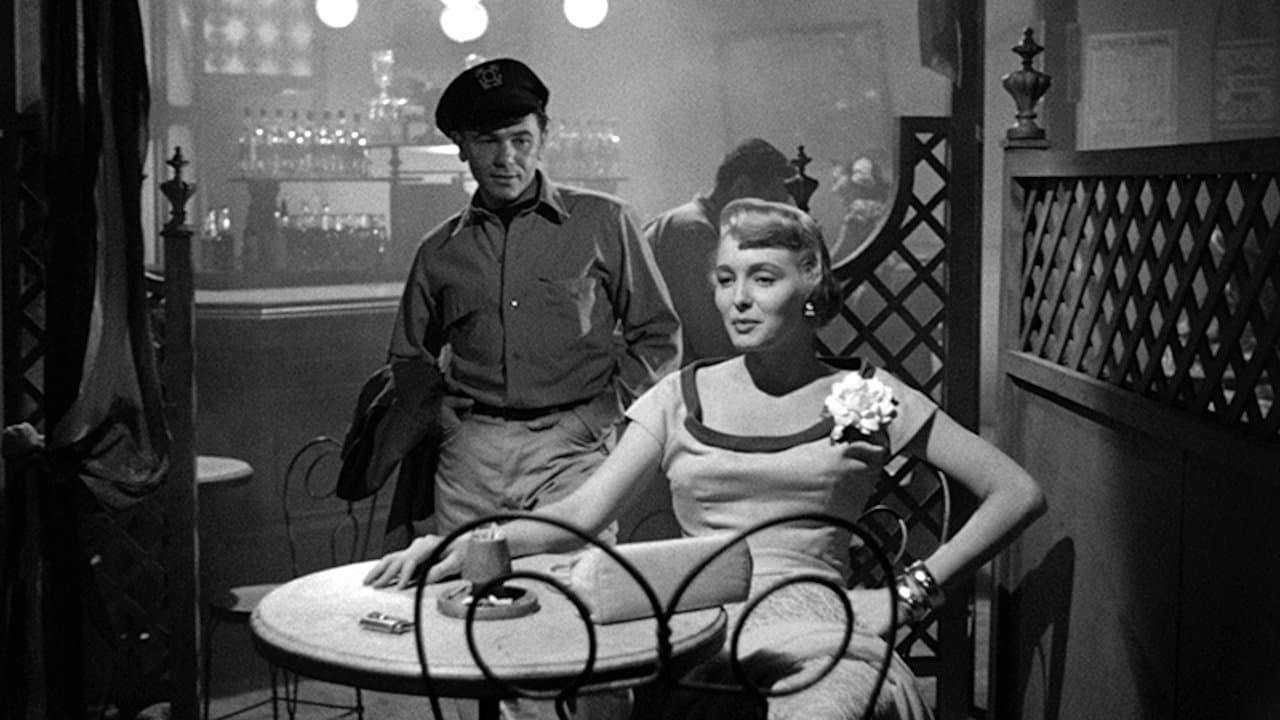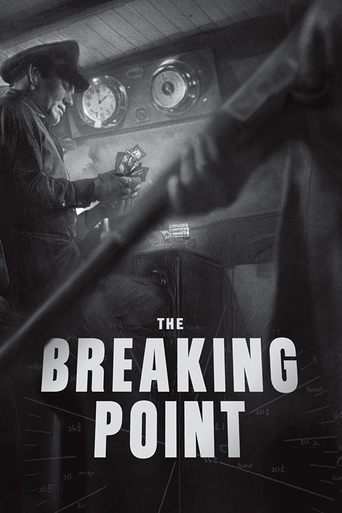

"The Breaking Point" is technically considered to be a remake of Ernest Hemingway's "To Have and Have Not," first brought to the screen with Bogie and Bacall. But it feels like a whole different story in just about every conceivable way. John Garfield excelled at playing prototypical noir heroes, desperate men doing desperate things when feeling trapped by an unfair fate. This is the role he has here, and watching his character dig himself deeper and deeper into shady doings that he knows are shady from the outset is like watching a slowly unfolding car accident. Patricia Neal is extremely fetching and knows how to deliver a sardonic one liner like no one's business, but the script doesn't do a whole lot with her other than have her appear here and there as window dressing. The stand out for me was Phyllis Thaxter as Garfield's plain Jane wife. It's refreshing in a film from 1950 to see a housewife portrayed as something other than a mindless cipher for her husband's thoughts and desires. Instead, she has a mind of her own and reserves of strength he might not give her credit for.The most quietly astonishing thing about "The Breaking Point" is its treatment of Garfield's friend and ship assistant, a black man played by Juano Hernandez. The fact that he's black is a complete non-issue in the film. He's treated as an equal by Garfield and his family, and none of the stereotypes about black people that were so prevalent in movies from this time period, even in movies with their hearts in the right places, are present here. The final scene of the film involves this character's son, and it's so striking, and so devastating, that in retrospect the entire film almost seems to be about that scene even though it has almost nothing to do with everything that's come before it.Michael Curtiz provides the no-frills direction.Grade: A
... View MoreHe's abrasive, truculent and dangerous, but Garfield is also mesmerising in this powerful film.Based on a novel by Ernest Hemmingway, the story is about WW2 veteran Harry Morgan (John Garfield) who runs a charter fishing boat business that is sinking financially. The lack of money impacts on his long-suffering wife, Lucy (Phyllis Thaxter), and his friend Wesley Park (Juano Hernández).When he is ripped-off by a client in Mexico, Harry becomes involved with shady deals involving using his boat for people smuggling and eventually rescuing gangsters. Along the way, his loyalty to Lucy is tested when he meets party girl Leona Charles (Patricia Neal). Everything comes to a head in a battle on the boat, but the ending is a tough one with a particularly poignant last scene.I only saw this film recently when it turned up on TCM. I thought it must have some connection to Huston's "Key Largo" because both have a very similar shootout on a fishing boat at the end. However, the only connection is that Huston probably pinched the ending from Hemingway's novel – "Key Largo" is actually based on a play by Maxwell Anderson. Later I realised that I had indeed seen the other two versions that were made from Hemingway's novel. All three are superior films; the Audie Murphy version, "The Gun Runners", probably features his best performance."The Breaking Point" was directed by Michael Curtiz, and the style of the man who made "Casablanca" shines through.Harry's descent to the dark side is understandable in the context of the story; circumstances continually conspire to bring him down, and he is too trusting of people who are basically scumbags. Garfield was perfect in the role – Harry Morgan is a man who has the nerve to walk the line between the legal and the illegal. He was a war hero, and feels that his service to his country should have provided better opportunities now that the war is over.The script is smart and the dialogue crackles in the exchanges between Garfield and Patricia Neal. In fact, the lines are nearly as brilliant as were those for Bogart and Bacall in the first adaption of the story, Howard Hawks' "To Have and Have Not".Sunny coastal footage is balanced with dark, moody studio shots highlighting the dark and light of the story. This is a classy piece of work from a novel that seems able to stand any number of interpretations.
... View MoreThe Breaking Point cannot properly be called a remake of To Have And Have Not as that classic film was altered to make the story relevant for domestic consumption in wartime America. There was also added the legendary chemistry of Bogey and Bacall in their first film together. Ernest Hemingway did not write that for the movie-going public.The Breaking Point is far more Hemingway and far more realistically done. John Garfield makes a perfect Hemingway hero and the locations along the California coast aren't glamorized in any way. This is a working class locale and the black and white cinematography and wind swept look given by same reflects Garfield and the area he is raising his family in. Garfield plays a World War II veteran who wanted to earn a living on the sea and have Phyllis Thaxter raise their daughters in that coastal location. But business comes in cycles and a bad season finds Garfield owing everyone including the butcher, the baker and candlestick maker. Most of all he owes for fuel and that guy is ready to take the boat for payment. When a charter client stiffs him on the bill, Garfield is forced to make some bad choices to pay his bills and support his family. Providing some of those bad choices is Wallace Ford playing a truly sleazebag shyster living on the Mexican side of the Pacific coast who ostensibly will get you a quickie Mexican divorce, but dabbles in all kinds of illegal fields. Actually I'm being unfair, shysters make bad lawyer jokes about Ford.Providing a little temptation for Garfield is Patricia Neal who is trying very hard for the same Lauren Bacall effect. She's the girlfriend of the client who stiffed Garfield in the first place and she has most original and cynical point of view about life and men.The Breaking Point provides John Garfield with one of his best performances in his next to last film. And he far more fits the Hemingway conception as does the overall film itself.
... View MoreExceptional version of Hemingway's To Have and Have Not is far superior to the Bogart/Bacall film. While the Bogie film was a good picture awash in style and the chemistry of the two leads this is far more realistic without the atmosphere perhaps but loaded with pleasures nonetheless.For starters this contains one of John Garfield's best performances. Always a fine actor he gets under the skin of his character and makes you understand his desperation and moral conflict, he's riveting every second he is on screen. This was one of his last films before his tragically early death, a sad loss of a great talent who isn't as well remembered as he should be today.Patricia Neal also scored strongly in this the best of her early roles. She is tough and world weary but also kind and sexy with her whiskey voice and blonde hair. Although it's never stated specifically it's very clear that her character is a prostitute, for the time period a bold point. She and Garfield work very well together and it's a pity his death prevented them from being paired again.The two other main actors, Phyllis Thaxter and Juano Hernandez, contribute exemplary work as well providing terrific support. Phyllis and Particia Neal are interesting contrasts and their scene together is a study in underplaying. Her scenes with Garfield are also very good, without being explicit they make it clear theirs is a full and happy marriage in all regards with the normal strains and joys.All this fine work would be for naught if not supported by an excellent screenplay and tight direction from the versatile Curtiz, a man who could direct any genre without problems.Less romantic in tone but a gripping drama that has been unfortunately obscured by the fame of the other version this is well worth seeking out.
... View More